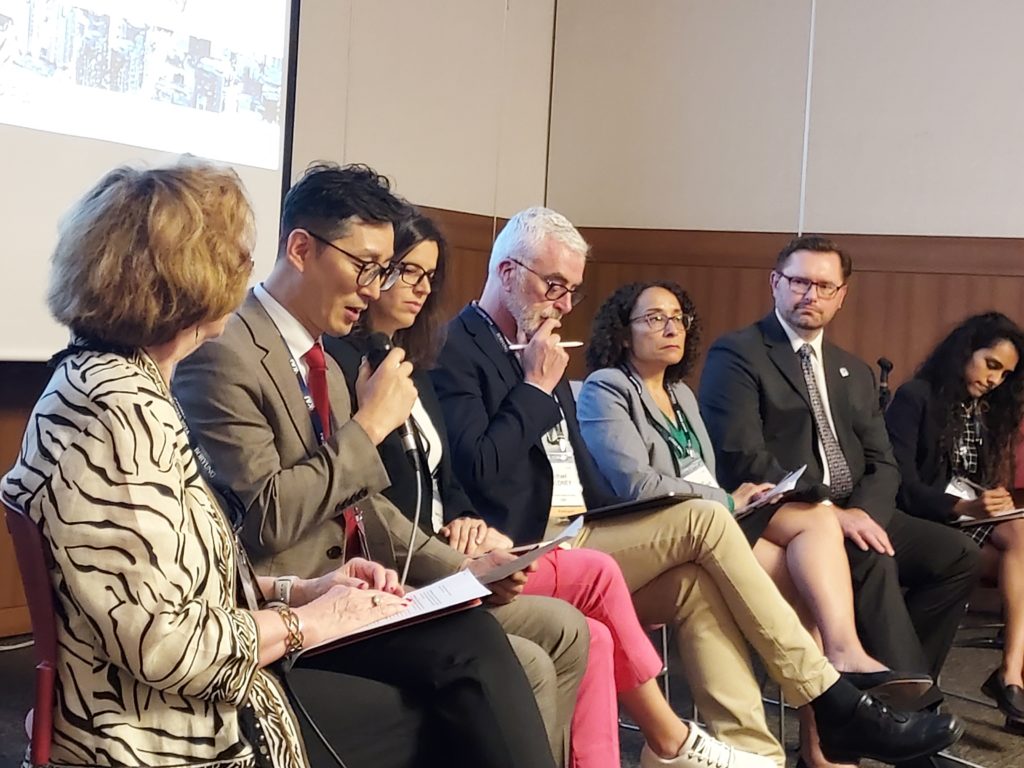안녕하세요 ! (pronounced: ann-ay-ong hassay-oh)
The rain was pretty steady yesterday, and inside BEXCO it’s easier to focus on the programme. But how do you organise your schedule with so much to choose from? It’s not just the many parallel scientific sessions, so many other special event and side events are going on.
Yesterday one such event was the Task Group on IDEA Initiative (TGII) session on IDEA as a Transformative Global Issue: Developing Strategies to Advance Positive Systemic Change in STEM Education and Careers Across the International Scientific Technical Community. Changhan Lee, from KAI, explained his organisation’s approach, giving us an insight into the situation in the space and aerospace sector in Korea with regard to IDEA. We heard about the idea of “belonging” applied to the workplace, about the importance of role models, and Laura Castillo-Page, NASEM, USA, underlined the need for data and stressing how diverse teams outperform others. The use of Slido for attendee participation was enthusiastically adopted, and certainly seems to encourage questions.
The Fireside Chat between Nicky Fox, NASA Associate Administrator, Science Mission Directorate, and André Trotter, Vice-President of VP, Lockheed Martin Space, was also very engaging. Michael Moloney, CEO of the American Institute of Physics, says “The compelling conversation between Nicky and André clearly reinforced the importance of international collaboration to NASA’s ambitious science strategy. Nicky also clearly outlined the agency’s principled approach to collaboration between nations: one based in respect, equity and inclusion–key strategies to pursuing the most challenging scientific opportunities we have to push the boundaries of our understanding of the cosmos, our planet, and our place in the universe.”
Another keenly attended event was The New COSPAR Community-Driven Space-Weather Roadmap: Its Context on the Global Stage, right after lunch, organised by Masha Kuznetsova. The panel discussion was lively, moderated by Mario Bisi, and the Q&A session kept everyone involved with its strict limit to answers of 45-seconds. In fact, the discussion carried on informally well after the end of the event.
This is what COSPAR does best, enabling dialogue in space science. Hajime Yano, the Chair of Scientific Commission B sums it up nicely:
“COSPAR was the first opportunity to report my postgraduate research on cosmic dust to the international science community. Since then, I have attended COSPAR general assemblies, symposiums, and workshops for the last three decades. In these years, I presented the latest results of space missions like Hayabusa, organized scientific events as an MSO/DO in the Sub-Commission B1 for small body exploration and the Panel on Planetary Protection, and proudly served the space science community as the commission and panel officer. COSPAR has also incubated new international collaboration projects, some of which indeed flew to space, including Hayabusa2. My students from Japan, USA, and Europe have also presented their work here and extended their research careers further. For me, COSPAR is the home where my space science career originates.”
(Editor’s note: please share your photos of COSPAR 2024 on social media with the hashtag #COSPAR2024, or directly to leigh.fergus@cosparhq.cnes.fr )

The Panel discussion for the TGII, left to right: Mary Snitch, LM Space, Moderator, USA; Changhan Lee, KAI, S. Korea, Anna Sabaté, Space Faculty, Singapore, Michael Moloney, American Institute for Physics, USA, Laura Castillo-Page, NASEM, USA; Christopher Geiger, LM Corporation, USA; Aura Roy, LM Space, Co-moderator, USA